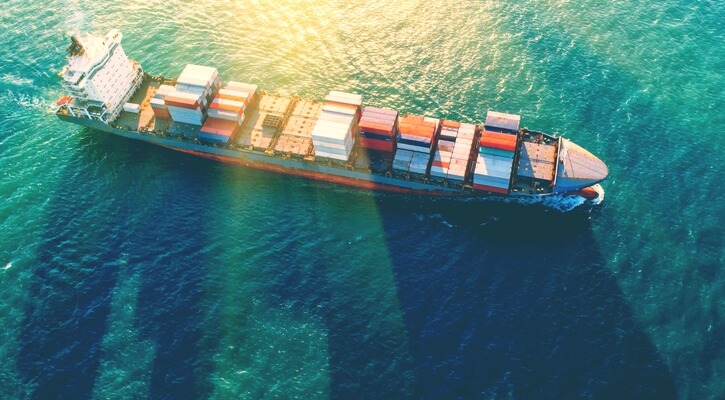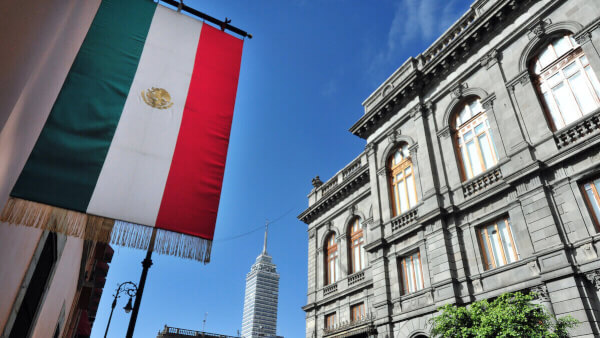Hiring Employees in Mexico: US Guide
Explore the process of hiring employees in Mexico to successfully navigate the legal and cultural considerations when expanding your workforce across borders!

Doing any kind of international buying or selling means choosing the best way to ship goods. If your business buys or sells overseas, you may be wondering about FOB, or “Free On Board” shipping.
If you’re new to overseas freight shipping, navigating those uncharted waters can be confusing and overwhelming. This guide should help you gain a better understanding of at least one of the many trade terms you may encounter. And who pays for what. In what circumstances.

Before you get started, a word.
Banks and money transfer providers often give you a bad exchange rate to make extra profits.
Wise is different. Its smart new technology skips hefty international transfer fees by connecting local bank accounts all around the world. Which means you can save up to 8x by using Wise rather than your bank or even PayPal when you send your money abroad.
Check out how to make your first transfer with Wise. And give it a try.
Oh, and while you’re at it, check out Wise’s borderless multi-currency account. Where you can manage and send dozens of currencies all from the same account.
Now, back to what you came here to read.

When referring to domestic shipping within the US, FOB can mean “Freight On Board,” but the legal meaning of the shipping term is “Free On Board.” This incoterm, or term describing an international contract, is one of many that outline the legal responsibilities of the buyer and the seller in an international shipping agreement, including who’s liable for the goods at each step of the shipping process.
FOB means that you, as the buyer, are responsible for the goods as soon as they are loaded onto the ship on the seller’s end. Essentially, as soon as your freight is on board, you’re the one liable for them. Cost-wise, it means you pay for all transport costs, customs, and if anything happens after the seller loads them onto the ship.

Let’s say you’re a US business buying goods from a supplier in Japan. You choose an FOB shipping agreement.
That means the seller will transport the goods to a port in Japan and load them onto a ship. The seller will pay all costs up to that point. But once the goods are on board the ship, they become your responsibility. And, as the buyer, you’ll pay all remaining costs to get the goods to the US port you choose, unload them and get them to their final destination.
In a general sense, this is how it would work in an example FOB situation:

Even if you’ve decided that FOB is the best decision for you, there are still a few more nuances. While in many FOB scenarios the costs are split between seller and buyer, there are ways in which the seller actually foots most of the transport bill or, conversely, that the buyer takes on most of the transport responsibility.
Which means you may still want to decide between FOB shipping point and FOB destination. Because there is a difference.
FOB shipping point works like this:
Essentially, in FOB shipping point, the buyer will foot the bill for transport costs from seller to himself.
There are many factors to take into consideration when deciding which option is better for you. Many sellers prefer to make FOB shipping point deals, because then the buyer will foot the cost and liability for transport.
However, if a buyer is more familiar with customs and import taxes at their receiving port, they may actually prefer FOB shipping point as they may know how to cut costs or have transport companies they work with that can offer better deals. In addition, in FOB shipping point scenarios, the buyer has more control over the shipment — they can choose the shipping company, route and shipping time, and they have recourse in dealing with the shipping company if anything goes wrong, since the company works for them, not the seller.
On the other hand, because the shipping will be the buyer’s responsibility in this case, oftentimes buyers must purchase additional insurance in case of any sort of accident or damage to the goods.
FOB destination works like this:
In FOB destination, the seller would pay for, and be liable for, transportation from herself to the buyer’s unloading dock.
While FOB destination may seem like a good deal to any buyer as they don’t have to worry about the costs and liability of the goods in transport, it has its disadvantages, too. For example, if the seller is responsible for the transport, the buyer also loses a bit of control over timing. In addition, if the seller is unfamiliar with customs and taxes in the buyer’s port of entry, there may be additional delays and hassles.
In a general sense, though, many buyers prefer FOB destination deals as seller takes on the risk of transport.

In an FOB agreement, often the seller only needs to take the goods to their nearest port. Although it can vary. Oftentimes, in an FOB arrangement, the port at which the goods change hands is indicated. Like if you saw “FOB Los Angeles” or “FOB Beijing” it would note where the seller must bring the goods before releasing them to the buyer. The port isn’t always necessarily the one closest to the seller.
After the title of goods is transferred, the buyer then assumes responsibility for transport and liability for the goods to reach their own unloading dock.
Here’s what you might expect to pay when buying goods with a FOB agreement.
The seller will invoice you for the purchase price of the goods. Something to watch out for when you pay for the goods is paying more than you need to for the international payment. Many banks and money transfer services hide most of their profit in poor exchange rates. Make sure you do your research before you foot the bill.
When you’re paying overseas suppliers, there are options like Wise if you need to send US dollars to China, for example. Or, if you’re paying in the local currency where you’re buying from, you may find you could save up to 8x by sending through Wise rather than your bank or even PayPal.
Wise connects local bank accounts all over the world to cut out expensive international fees. On top of that, you’ll always get the real exchange rate, like the ones you see on Google. Which means Wise could help cut down on the cost of making an international money transfer.
Depending on the agreement, you may have to pay for part or all of the shipping and transport costs. Which may mean you’ll need to have a shipping company move the goods by sea or air from the seller’s country to your country.
Once the goods reach port in your country, you may also have to pay to have them unloaded from the ship or plane, unpacked and prepared to be shipped onward.
If there are any taxes or fees associated with clearing your goods through customs in your country, you’ll have to pay for all of that.
However you’re getting your goods from the destination port to their final destination, that cost is also on you.
Whether you ultimately decide to ship FOB or choose another agreement, it’s important to know all of your options so you can choose the one that’s best for you. This guide should help you understand FOB shipping, which should get you on your way to knowing how best to ship your goods internationally for your business.
| ----- |
| This publication is provided for general information purposes only and is not intended to cover every aspect of the topics with which it deals. It is not intended to amount to advice on which you should rely. You must obtain professional or specialist advice before taking, or refraining from, any action on the basis of the content in this publication. The information in this publication does not constitute legal, tax or other professional advice from TransferWise Limited or its affiliates. Prior results do not guarantee a similar outcome. We make no representations, warranties or guarantees, whether express or implied, that the content in the publication is accurate, complete or up to date. |
*Please see terms of use and product availability for your region or visit Wise fees and pricing for the most up to date pricing and fee information.
This publication is provided for general information purposes and does not constitute legal, tax or other professional advice from Wise Payments Limited or its subsidiaries and its affiliates, and it is not intended as a substitute for obtaining advice from a financial advisor or any other professional.
We make no representations, warranties or guarantees, whether expressed or implied, that the content in the publication is accurate, complete or up to date.

Explore the process of hiring employees in Mexico to successfully navigate the legal and cultural considerations when expanding your workforce across borders!

What is a global contractor? Uncover the intricacies of managing a global workforce with our guide. Gain valuable tips and insights for contractor management!

Learn efficient payment strategies with our guide on how to pay remote workers in Canada. Find out how to streamline payroll, ensure compliance & save money!

Expand your team globally by discovering essential insights and money saving tips on hiring remote employees in other countries!

Learn more about global payment methods: 1. Wise 2. Wire Transfers 3. International ACH 4. Direct Debit and Bank Transfer 5. Paper Checks 6. Credit Card

Pave the way for your business venture in Mexico with our guide on starting a business in Mexico as a foreigner. Navigate the regulatory landscape and embark on